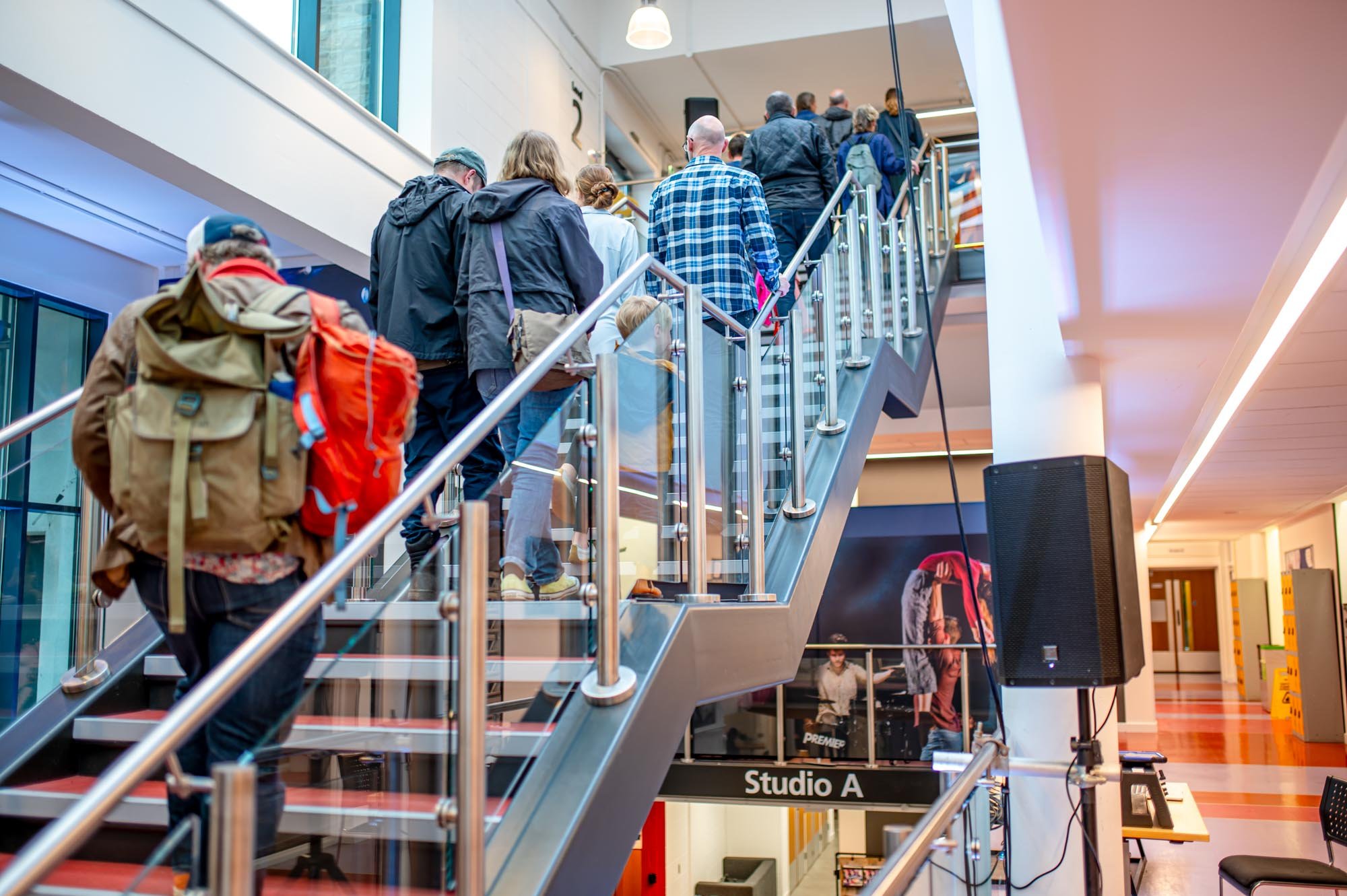Music + Q&A from FOUR
Performed at AMATA, Falmouth University - 26.07.23











1.Light
St. Anthony Head Lighthouse, Roseland Peninsula
Height of Tower - 19m
Height of light above Mean High Water - 22m
Range of Light - 12NM
Light frequency - 15 seconds
2. Chain
King Harry Ferry, Feock
Chain Length - 274 metres
Depth of chain in river at deepest point - 70ft
Average crossing time - 5’ 03”
3. Stone
Treffry Viaduct, Luxulyan Valley
Height of Viaduct - 27m
Length of Viaduct - 204m
Number of Arches - 10
Arch span - 12m
4. Engine
Michell’s Engine, Pool
Running Speed - 17 revolutions per minute
Cylinder diameter - 30 inches
Stroke - 9ft
Depth of shaft - 1500ft
Incidental Waiting Room
Imaginary waiting room
Size of room - 10m x 10m
Waiting time - 10 minutes
Q&A
Q. You mentioned how each piece had been written using data about the structures? Why was this?
I have always been fascinated by the maths and structure of music, things like the measure of beats, the numbers of bars, the divisions of note values - musical data, expressed as black and white dots on a flat page, all of which is somehow totally transcended when a piece is written. I wanted to strip back my writing process to some simple data decisions and see what happened from there.
Q. How did this work, composition wise?
I started each work with research into some key measurements for each structure, and then translated those into the musical building blocks. Chain, for example, is 274 bars long (the length of the chain) and plays for exactly 5’03 minutes (the length of an average crossing). In Light, there is a burst of sound (the triangle) every 15 seconds, which is how frequently the beam of light from the old St. Anthony Head Lighthouse used to shine. It is layered over a 20 second burst which is the new beam’s frequency. In Engine, the looped melody line is 17 notes long and the whole loop lasts exactly 1 minute (Michell’s Engine has a running speed of 17 revolutions per minute).
Q. What were you hoping for by splitting the music across the levels?
I wanted to explore the effect of experiencing music performance, and amplified music, in non-traditional spaces and away from the stage/audience model. I wanted to create a sense of distance from music (Light), movement (Chain), travelling through it (Stone) then intimacy with it (Engine), to see how the experience of listening might vary. I also wanted to test the idea of audiences walking through or alongside music, and the AMATA foyer gave me a great opportunity to play with all these things.
Q. How much of the music was written and recorded in the residency week?
The bulk of the work was written, note wise, in the 3 months before. But the sound experience of it (deciding which speaker which part should come out of, and mixing of each) happened that week. It felt like the piece changed, grew and settled a lot during that time.
Q. Why was it dark in the last room?
I was particularly aware in the foyer that there was lots of light and visual distraction, and I was interested in how the contrast of walking into a lowly lit room would change the listening experience. After the airy, disconnected sensation of the foyer music I wanted to it to feel like you were walking inside something (the Engine).
Q. Can I buy the music?
I’m still working out the recorded side of things. If pieces are meant to be heard across levels or inside a space, it seems out of kilter to then present them in a flat, 2D way. But I appreciate I can’t just write for huge spaces! So TBC…
Q. What next?
I’d love to keep exploring 360° music performances - using both live and amplified sound. There are so many multi-layered public spaces, with balconies, internal courtyards and stairwells that I dream of getting the chance to write music for and perform it in. I’m going to spend some time exploring to find the perfect space for my next piece.
Thank You:
Lee Evans (Sound Design & Engineering), Christian Aindow, Isaac Ash, Livvy Spark, Jack Bullock and the tech team at AMATA, Falmouth University.
Musicians Martin Skews, Ben Sutcliffe & Kate Riaz for the live performance of Engine.
All recorded tracks written, performed and produced by Kath Buckler, with Chris Bennett on Viola.
Artwork by Steven Buckler. Photos & Video by Claire Wilson at LLE Photography.

